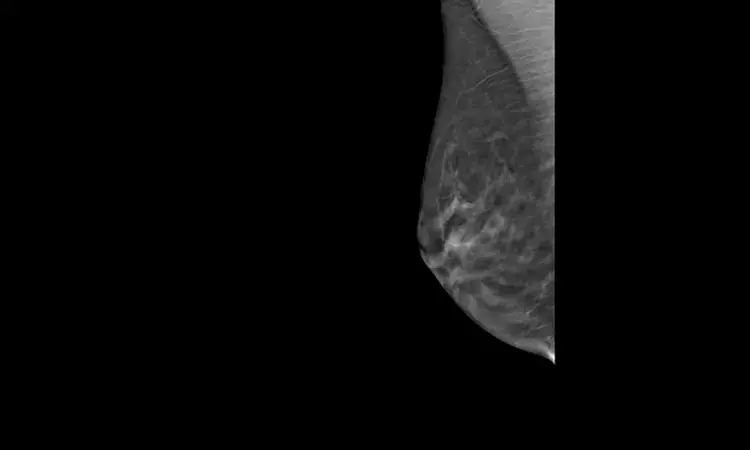- Home
- Medical news & Guidelines
- Anesthesiology
- Cardiology and CTVS
- Critical Care
- Dentistry
- Dermatology
- Diabetes and Endocrinology
- ENT
- Gastroenterology
- Medicine
- Nephrology
- Neurology
- Obstretics-Gynaecology
- Oncology
- Ophthalmology
- Orthopaedics
- Pediatrics-Neonatology
- Psychiatry
- Pulmonology
- Radiology
- Surgery
- Urology
- Laboratory Medicine
- Diet
- Nursing
- Paramedical
- Physiotherapy
- Health news
- Fact Check
- Bone Health Fact Check
- Brain Health Fact Check
- Cancer Related Fact Check
- Child Care Fact Check
- Dental and oral health fact check
- Diabetes and metabolic health fact check
- Diet and Nutrition Fact Check
- Eye and ENT Care Fact Check
- Fitness fact check
- Gut health fact check
- Heart health fact check
- Kidney health fact check
- Medical education fact check
- Men's health fact check
- Respiratory fact check
- Skin and hair care fact check
- Vaccine and Immunization fact check
- Women's health fact check
- AYUSH
- State News
- Andaman and Nicobar Islands
- Andhra Pradesh
- Arunachal Pradesh
- Assam
- Bihar
- Chandigarh
- Chattisgarh
- Dadra and Nagar Haveli
- Daman and Diu
- Delhi
- Goa
- Gujarat
- Haryana
- Himachal Pradesh
- Jammu & Kashmir
- Jharkhand
- Karnataka
- Kerala
- Ladakh
- Lakshadweep
- Madhya Pradesh
- Maharashtra
- Manipur
- Meghalaya
- Mizoram
- Nagaland
- Odisha
- Puducherry
- Punjab
- Rajasthan
- Sikkim
- Tamil Nadu
- Telangana
- Tripura
- Uttar Pradesh
- Uttrakhand
- West Bengal
- Medical Education
- Industry
Ultrasound combined with DBT decreases mammography screening recall rate: Study

USA: Whole-breast ultrasound combined with digital breast tomosynthesis (DBT) screening exams in women with dense breast tissue lowers the rate of abnormal interpretations, finds a recent study. The findings of the study were presented at the 2021 American Roentgen Ray Society (ARRS) meeting.
According to the study, the combination reduced the number of abnormal findings by half and may lower recall rates compared to screening with DBT alone.
Whole-breast ultrasound is a relatively low-cost, non-invasive option for screening and has been demonstrated to detect an additional 1.1 to 4.6 cancers per 1,000 patients. However, it has a high false-positive rate which increases screening recall rates. Meanwhile, DBT has been shown to decrease the mammography screening recall rate and yields more information than conventional 2D mammography.
Against the above background, Cameron Thomson, an undergraduate researcher from the University of Massachusetts, and colleagues aimed to examine how well the technologies worked together.
12,649 DBT screening exams performed between January 2019 and December 2019. The researchers included all women with dense breast tissue who received whole-breast ultrasound during the same period.
The screenings were of female patients with heterogeneously (11,314) or extremely (1,335) dense breasts. About one-third of these women (4,115) underwent DBT only and the other two-thirds (8,534) underwent concurrent DBT and whole-breast ultrasound.
Screening whole-breast ultrasound was performed by trained technologists and interpreted online by radiologists on-site to check abnormal findings, which were represented by BI-RADS classification. DBT studies classified as BI-RADS 0, 3, 4, and 5 were considered to be abnormal, while BI-RADS 1 and 2 were classified as normal. There were no BI-RADS 0 studies among the whole-breast ultrasound, so abnormal studies were defined as 3, 4, and 5.
Key findings of the study include:
- The addition of whole-breast ultrasound to DBT reduced the overall rate of abnormal findings from 14% to 6.7%; this represents a twofold reduction in the abnormal interpretation rate for women with dense breast tissue.
- This reduction occurred even as ultrasound found an additional 2.9% of suspicious findings that had been missed with DBT alone.
The team said findings like these are important, as women with dense breast tissue can benefit from additional cancer detection without adverse false positives.
"These findings are important as this potentially permits women with dense breast tissue the opportunity to benefit from additional cancer detection without the fear of increased adverse, abnormal interpretation rates when opting for supplemental screening with whole-breast ultrasound," Thomson said.
Dr Kamal Kant Kohli-MBBS, DTCD- a chest specialist with more than 30 years of practice and a flair for writing clinical articles, Dr Kamal Kant Kohli joined Medical Dialogues as a Chief Editor of Medical News. Besides writing articles, as an editor, he proofreads and verifies all the medical content published on Medical Dialogues including those coming from journals, studies,medical conferences,guidelines etc. Email: drkohli@medicaldialogues.in. Contact no. 011-43720751


